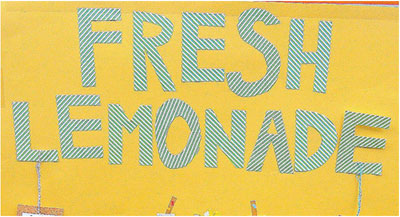
Source: Tennis shoes, Mr. T in DC, Flickr; Bicycle, Lenore Edman, Flickr
Tyrone wants to plan an exercise routine for the summer. He could either walk around his block for 10 miles at a rate of 5 miles per hour or ride his bicycle around his neighborhood for 20 miles at 10 miles per hour. Tyrone concludes that both exercise routines would take the same amount of time. Is Tyrone's conclusion reasonable?

Source: Tennis shoes, Mr. T in DC, Flickr; Bicycle, Lenore Edman, Flickr
To determine if Tyrone's conclusion is reasonable, calculate the amount of time it would take him to complete each activity, and then compare the results.
Walking:
d = rt
10 = 5t
2 = t
Bicycling:
d = rt
20 = 10t
2 = t
Conclusion:
Both activities will take 2 hours to complete, so Tyrone's conclusion is reasonable.
Hannah is selling lemonade to raise money for an MP3 player. She spent $30 on supplies for the stand and charges $0.50 per glass she sells. Hannah's profit, p, can be represented by the function p = 0.50n – 30, where n represents the number of glasses of lemonade she sells. What is the minimum number of glasses of lemonade Hannah must sell to make a profit?

Source: Lemonade sign, Amy Gizienski, Flickr
To calculate the minimum number of glasses of lemonade Hannah must sell, n, use the equation p = 0.50n – 30, where p represents her profit.
Minimum:
p = 0.50n – 30
0 = 0.50n – 30 Use 0 for p since the difference between the cost of supplies and the money earned must be at least 0.
30 = 0.50n
60 = n
The minimum number of glasses of lemonade Hannah must sell is 61.